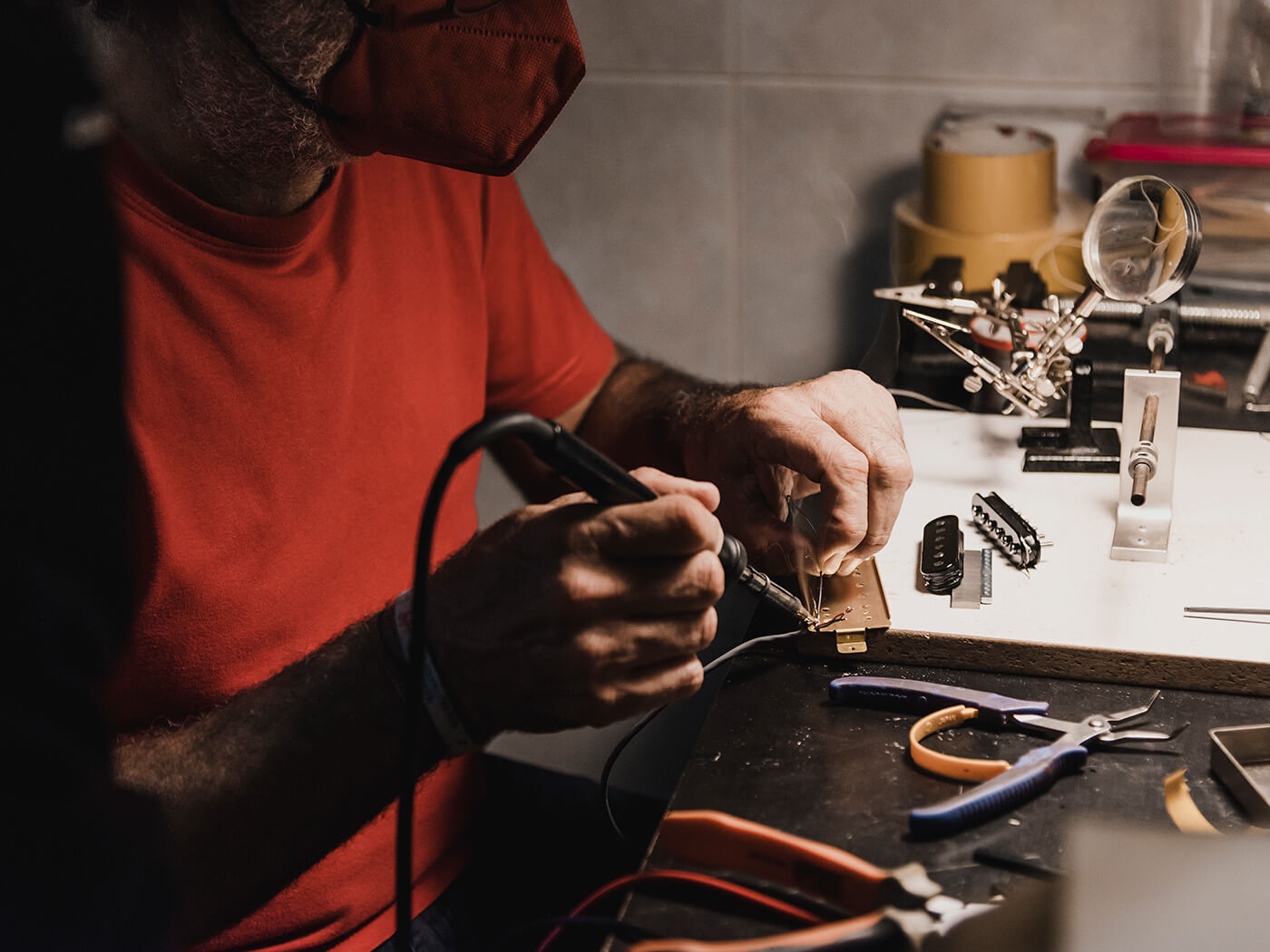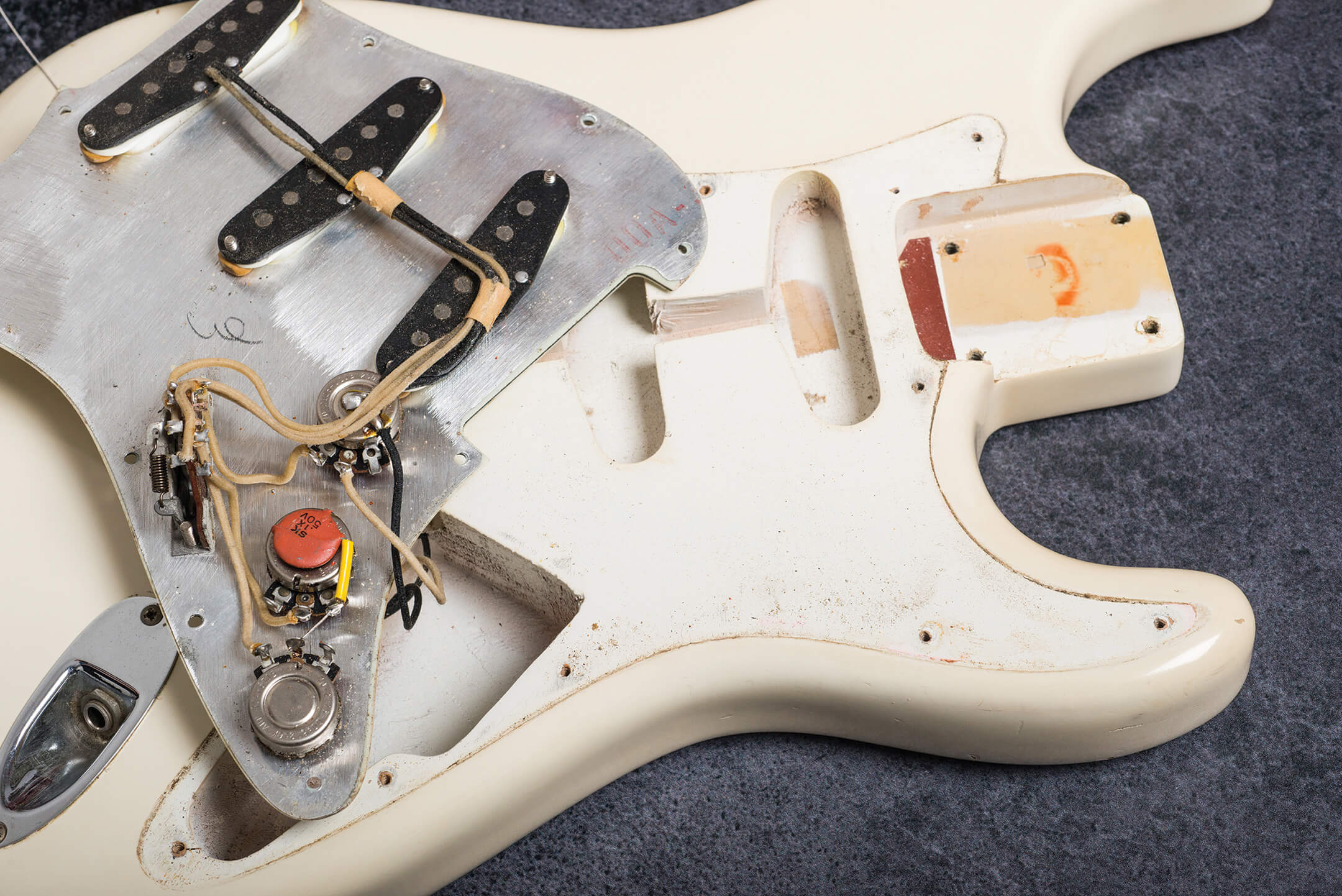Related Tags
Five ways to improve your guitar tone – without buying loads of new gear
It’s a quest that unites virtually all guitar players – and fuels an inordinate amount of new gear purchases – but you don’t necessarily need to tear up your existing rig to sound better.

Image: Getty Images
No matter if you’ve been playing the guitar for 10 weeks or 10 years, chances are you spend an inordinate amount of time thinking about tone, and specifically how you can make that tone better to your ears.
For many of us, the quest for better tone inevitably ends with buying new gear – more guitars, more amps, more pedals… but it doesn’t have to be that way.
There are ways that you can make your guitar play and sound better without necessarily trading in your trusty existing guitar rig. Here’s how:
Get your guitar set up properly

First, let’s talk about the basics. To get the best sound out of your electric guitar, you need to have a good setup. This means making sure your guitar is properly intonated and that the action is set correctly. If you’re not sure how to do this, take your guitar to a professional guitar technician who can set it up for you. You’ll notice a big difference in how it plays once it’s properly set up, and that will have a knock-on effect on how good it sounds too.
Change your strings (and use decent ones)

When was the last time you changed your strings? If it was more than a couple of months then stop what you’re doing right now and change them immediately! A new set of strings can have a huge impact on your tone, and it’s not just about ditching the dull, lifeless old ones for some zingy, shiny new ones.
The type of strings you use can have a big impact on your guitar’s tone. If you want a brighter sound, go for a set of nickel-plated strings. If you want a warmer, more mellow sound, go for a set of pure nickel strings. You can also experiment with different gauges to find the right balance of tension and tone. Thicker strings will have more tension, which can be great for heavy riffing, but thinner strings can be more comfortable to play and can give you a brighter sound.
Swap out those pickups

A bit more involved this may be, but another way to improve your guitar’s tone is to upgrade your pickups. Pickups are the magnets that sit under the strings and pick up the vibrations, which are then sent to your amplifier. Different pickups have different characteristics, so it’s worth doing some research to find the right ones for your playing style. Single-coil pickups are known for their bright, clear tone, while humbucking pickups have a warmer, fuller sound. The output, magnet type and even cover material can all impact on your tone so do your research and find what’s right for you.
If you’re not ready to invest in new pickups, you can also experiment with different pickup heights. Raising the pickups closer to the strings can give you a brighter, more aggressive sound, while lowering them can give you a warmer, more mellow sound. Just make sure to adjust the height evenly on both sides to avoid any unwanted buzzing or uneven tone – and don’t put them too high: the magnets in the pickup can start to exert force on your strings, pulling them out of tune!
Upgrade your electronics

The next thing to consider is your guitar’s electronics. The pots and switches on your guitar can have a significant impact, so it’s worth upgrading them if you’re not happy with your guitar’s current sound. Higher-quality pots and switches can give you a clearer, more consistent tone and can also reduce unwanted noise and hum.
Another way to improve your guitar’s tone is to change the capacitors in your guitar’s tone circuit. Capacitors control the amount of treble and bass in your guitar’s signal, so swapping out the stock capacitors for higher-quality ones, or ones of different resistance, can give you more control over your tone. Again, make sure to do your research and find the right capacitors for your playing style.
Practice, practice, practice
You knew it was coming didn’t you? Yep, let’s talk about the importance of good technique. No amount of gear upgrades can replace good technique, so make sure you’re practising regularly and paying attention to your playing style. Simple things like picking technique, fretting technique, and finger strength can all have a big impact on your tone and playing ability. Make sure to practise slowly and focus on the fundamentals, and your playing will improve over time.
As you can see, there are many ways to improve your electric guitar’s tone and playability. From simple tweaks to more in-depth modifications, there’s a lot you can do to get the sound you’re looking for without having to spend loads on new gear. Remember to start with the basics and make sure your guitar is properly set up, experiment with different strings and pickups, upgrade your electronics if necessary, and focus on your technique. With a little bit of effort, you could finally nail that sound in your head.
For more guides, click here.
